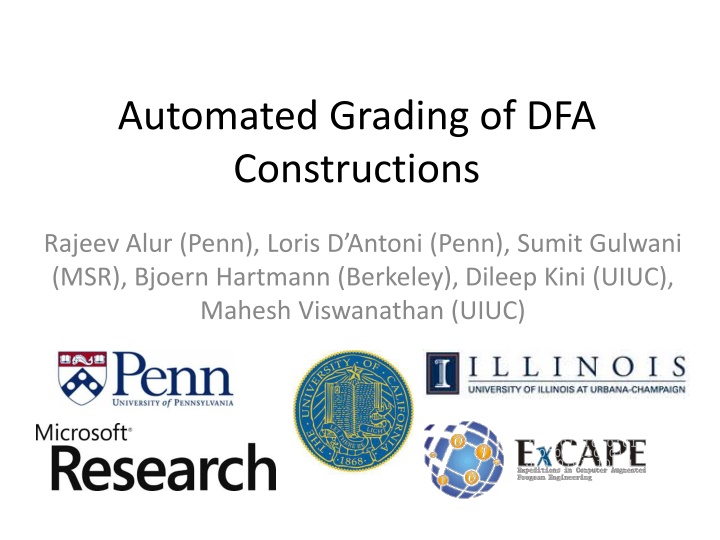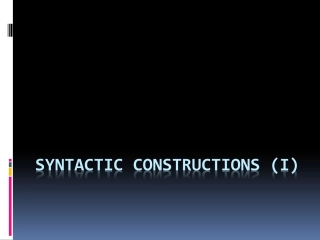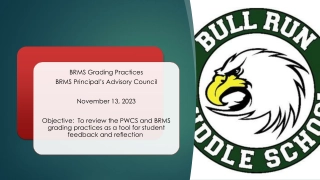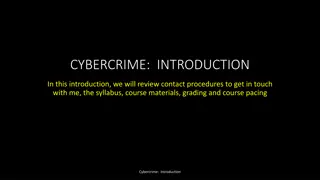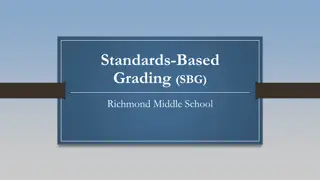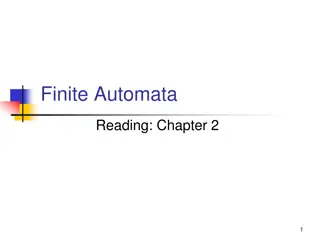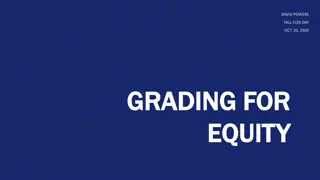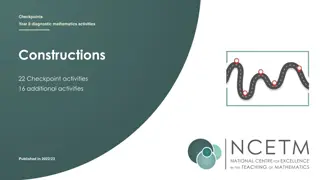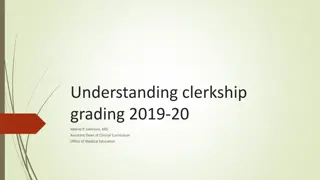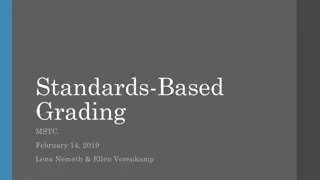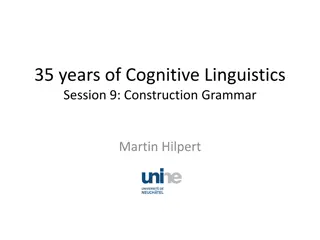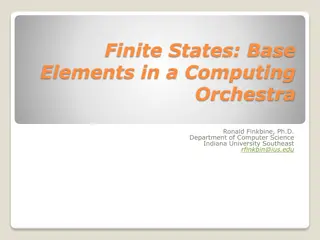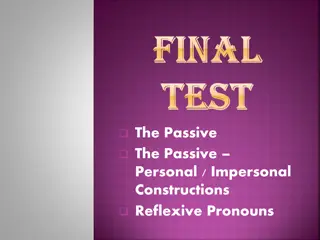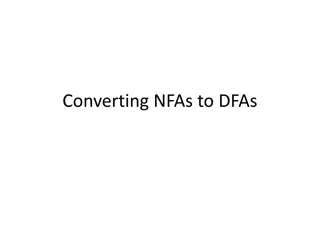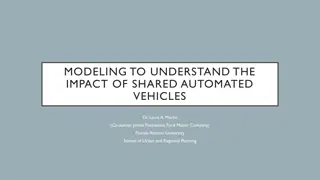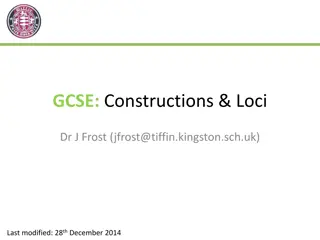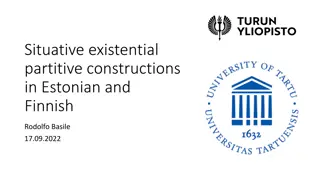Automated Grading of DFA Constructions
In this study by Rajeev Alur, Loris D Antoni, Sumit Gulwani, Bjoern Hartmann, Dileep Kini, and Mahesh Viswanathan, the focus is on automating the grading process for DFA constructions to address inconsistencies in human grading and the demands of MOOCs. The DFA construction problem, student solutions, and strategies like Mosel, Brute Force Search, and Solution Syntactic Mistake are explored. Efforts are made to minimize syntactic mistakes and enhance accuracy in grading DFA constructions efficiently.
Download Presentation

Please find below an Image/Link to download the presentation.
The content on the website is provided AS IS for your information and personal use only. It may not be sold, licensed, or shared on other websites without obtaining consent from the author.If you encounter any issues during the download, it is possible that the publisher has removed the file from their server.
You are allowed to download the files provided on this website for personal or commercial use, subject to the condition that they are used lawfully. All files are the property of their respective owners.
The content on the website is provided AS IS for your information and personal use only. It may not be sold, licensed, or shared on other websites without obtaining consent from the author.
E N D
Presentation Transcript
Automated Grading of DFA Constructions Rajeev Alur (Penn), Loris D Antoni (Penn), Sumit Gulwani (MSR), Bjoern Hartmann (Berkeley), Dileep Kini (UIUC), Mahesh Viswanathan (UIUC)
Motivations Grading is a tedious and time consuming task Human grades are often inconsistent MOOCs (Massive Online Open Courses) admits thousands of students, infeasible to grade manually
The DFA Construction Problem Draw the DFA accepting the language: { s | ab appears in s exactly 2 times } Solution:
Problem Syntactic Mistake The problem description was { s | ab appears in s exactly 2 times } The student instead drew DFA for { s | ab appears in s at least 2 times } INTUITION: find the distance between the two language descriptions
Mosel: MSO + Syntactic Sugar Mosel: similar to MSO; predicates describing DFAs sizeOf(indOf( ab ))=2 sizeOf(indOf( ab ))>=2 If we had such descriptions we could use tree edit distance to check how far they are from each other ``Easy to go from such Mosel predicates to automata (classical MSO to DFA algorithm) However, what we need is: given a DFA compute a (small) Mosel formula
Brute Force Search Enumerate all the predicates and check for equivalence with target DFA Search pruning and speeding: Avoid trivially equivalent predicates (A V B, B V A) Approximate equivalence using set of test strings: Generate sets of positive and negative examples that distinguish each state in the target DFA One can prove all such strings are enough to prove inequivalent all DFAs of smaller size than target DFA
Solution Syntactic Mistake The student forgot one final state INTUITION: find the smallest number of syntactic modification to fix solutions
DFA Edit Difference Compute DFA edit distance: Number of edits necessary to transform the DFA into a correct one An edit is Make a state (non)final Add a new state Redirect a transition
DFA Edit Difference: How to compute it? We try every possible edit and check for equivalence Speed up equivalence by using test set The problem of finding DFAED is in NP (is it NP-hard?)
Solution Semantic Mistake The student didn t see that the a loop might not be traversed INTUITION: find on how many strings the student is wrong
Approximate Density S = correct solution Compute Symmetric Difference: D = S\A U A\S Measure relative size of D with respect to S Size(D,S) = limn-> Dn/Sn Size(D,S) is not computable in general (the limit oscillates) Approximate the limit to finite n A = student attempt
Evaluation 1/2 H1, H2 = human graders N =na ve grader T = tool 100? Percentage? of? a empts? within? X? 90? 80? 70? H1-N? H1-H2? H1-T? 60? Tool is closer to humans than humans are to each other 50? 40? 30? 20? 0? 1? 2? 3? 4? 5? 6? 7? 8? 9? 10? Grade? Difference?
Evaluation 2/2 H1, H2 = human graders N =na ve grader T = tool Tool and humans look indistinguishable
Pros and Cons Pros: On disagreeing cases, human grader often realized that his grade was inaccurate Identical solutions receive same grades and correct attempts awarded max score (unlike human) Cons: For now limited to small DFAs When two types of mistakes happen at same time, the tool can t figure it out
Conclusions AutomataTutor: a tool that grades DFA constructions fully automatically Few new automata problems: How to compute DFA edit difference? How to synthesize Mosel formulas in a better way? How to compute language sizes in a way that is always defined and accurate?
Questions? Thank you!
